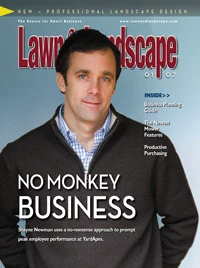At some point, contractors struggle with whether they are deriving fair compensation for their snow removal services, a question with an answer that ultimately results in fiscal success or failure.
|
|
From my experience, the “Golden Rule” of pricing is having an excellent working knowledge of my costs. Knowing my costs is the bottom line in all aspects of pricing out snow removal. Knowing my costs allows me to be a competitive and profitable contractor. Combining those two aspects with accurately estimating my time to complete a job tells me how my job margins are performing.
THE NUMBERS I NEED. Let’s say, for this example, the average two-car driveway (cars in the garage) takes me 10 minutes to plow (including back dragging and clearing the wind row in front of the garage doors) and another 10 minutes to clear the sidewalks and path to the front door. I know I’ll be on this job site for 20 minutes.
I take my hourly rate, which I have predetermined based on what is competitive in my market. This should be a figure I’m comfortable with and covers all of my overhead expenses, i.e. insurance, fuel, truck costs and time.
For this purpose, I’ll use an hourly rate of $65 and divide it by 60 minutes then multiply it by the amount of time I’m on site. This provides me with my base price for the job. This formula gives me a basis to start with and I can adjust this to reflect a level of difficulty, to include a deicing product or other customer service, such as snow removal from cars, decks, roofs, etc.
PRICING STRUCTURE. There are a variety of methods and formulas I use for pricing. I can invoice by the push, which means I charge each time I go to a site and provide a service.
I can invoice per event, which means my invoice reflects the total inches of snowfall for a particular storm.
When using this pricing structure there are a number of different ways to determine my price breaks. For example, if I determine my 2- to 3.99-inch pricing should be $30, the rest of my prices will be based on this number and a multiplier scale where prices in each category reflect the increased level of difficulty.
Please note the multipliers I use here are no reflection of industry standards, but merely examples. Play with the numbers and multipliers until you find a combination that keeps you competitive.
SEASONAL CONTRACTS. Another billing method is seasonal contracts, which offer benefits to both me and my clients and are typically entered into for a minimum of three years. The biggest benefits of seasonal contracts are they give my customer a fixed number for budgeting their snow removal expenses and the ability to defer this cost over a predetermined period of time.
For this example, consider a contract worth $47,000 per year for three years with six payments due to me between November 1 and April 15. The monthly payments received are added into my operating budget, which provides me cash flow to offset expenses in slower snow seasons.
Be aware, I research my seasonal snowfall totals over the course of several years when I’m pricing. The end result should be a contract that one year my client may do better, one year I may do better and one year things will even out for both of us.
OLD RELIABLE. There is the old-reliable method of time and materials operation (T&M) where I bill hourly for each laborer and piece of machinery on site.
I, personally, would rather not bid hourly/(time and materials) jobs as I see little benefit for the customer or incentive for me to finish the job in a reasonable time frame. I may enter into a T&M when I’m asked to remove and take snow off site or reposition piles. I may also build T&M pricing into my contract so if a snowfall event were to exceed a predetermined amount, the job would switch over to a T&M rate.
Whichever method I choose, diversity is good – I don’t like to have all of my pricing eggs in one basket. By using different contract structures I can secure some form of cash flow even during a slow winter. – Ken Pagurek
The author is president of HPK Property Maintenance, Blue Bell , Pa. Reach him at 610/275-7980 or k.pagurek@4hpk.com.

Explore the January 2007 Issue
Check out more from this issue and find your next story to read.
Latest from Lawn & Landscape
- Bartlett Tree Experts gave away 50,000 tree seedlings for Arbor Day
- Connect, Control & Conserve with Horizon Technical Services
- Use Horizon's Parts Hotline
- How I built a Top 100 company
- Horizon’s Exclusive TurfGro Fertilizer
- Grow your business with mosquito control
- LandCare adds 2 branches in SoCal, promotes Aleman to branch manager
- Spray them away







